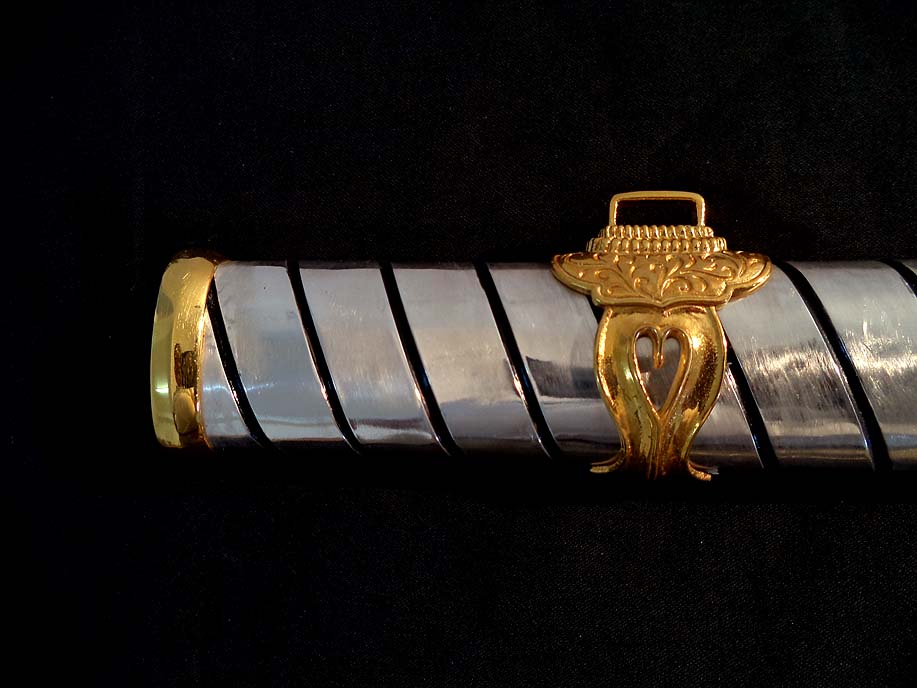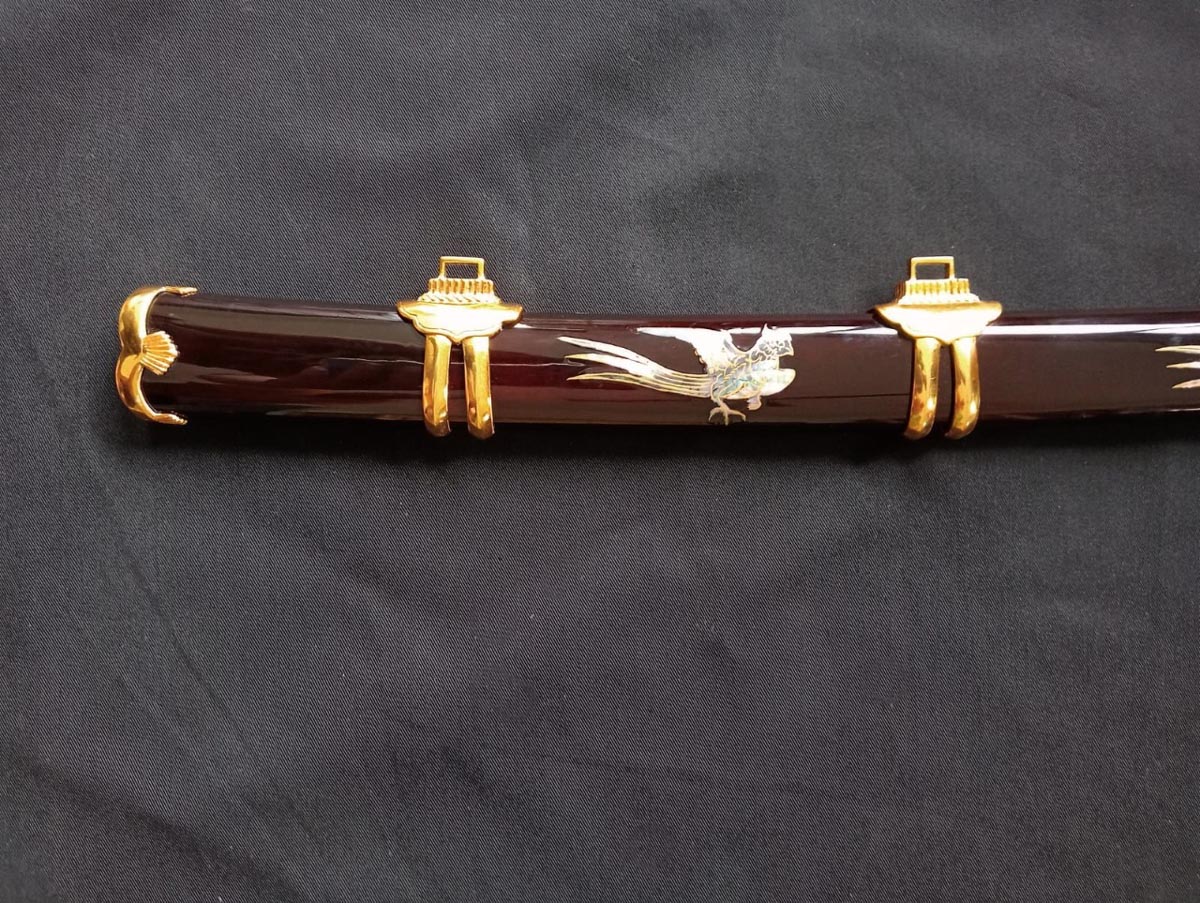 |
Hirumaki (Leech Spirals) The spiral pattern applied to the surface of the scabbard and handle for decoration or reinforcement looks like a small aquatic animal leech wrapped around, so it is called this name, and it was popular from the Heian period to the end of the Edo period. As an old example, the Niutsuhime Shrine in Fukui Prefecture has handed down an Ikamono-zukuri sword with a thin silver plate with 5/8 inch width wrapped around the handle and scabbard. Also, the koshirae used by Hideyoshi Taiko (National Museum collection) is most well-known for its vermilion-lacquered scabbard and gold leech spirals. |
 |
Boiled coloring (simmered Coloring)
This traditional method is unique to Japan and is for coloring pure copper and copper alloys that has been studied since before the Muromachi period. It is also called the boiled color finish method, which forms a beautiful greenish oxidized film to add antiweatherability. It was invented as a coloring method of alloys such as shakudo and shibuichi to name a few for decoration purposes and is said to be an excellent boiled coloring technique that is currently used for coloring copperware in the field of arts and crafts. |
 |
Kijitamenuri and Mother-of-pearl It is called either Kijitame-nuri or Kijiro-nuri, and it is a coating that allows the grain of the wood to show through under a deep brown color. They are characterized by making a coating film. Mother-of-pearl is a craft technique in which the pearl-colored parts of seashells are polished into thin pieces, cut into various shapes, and then embedded or pasted onto lacquerware or wooden surfaces for decoration. It was brought to Japan from China during the Nara period, and was also used in Makie during the Heian period. |